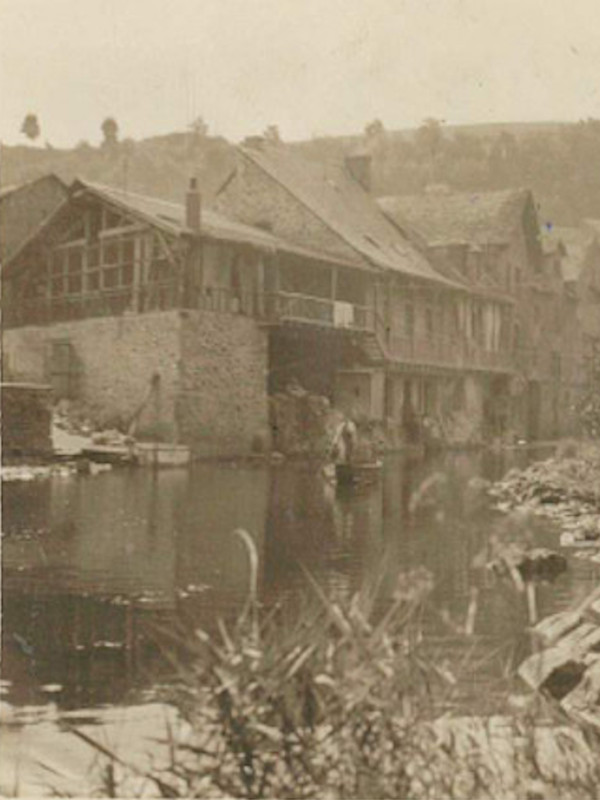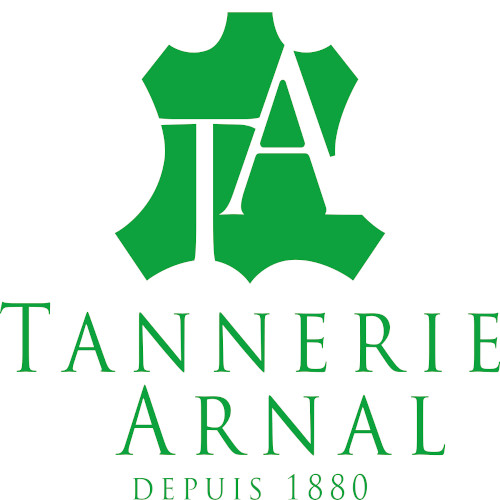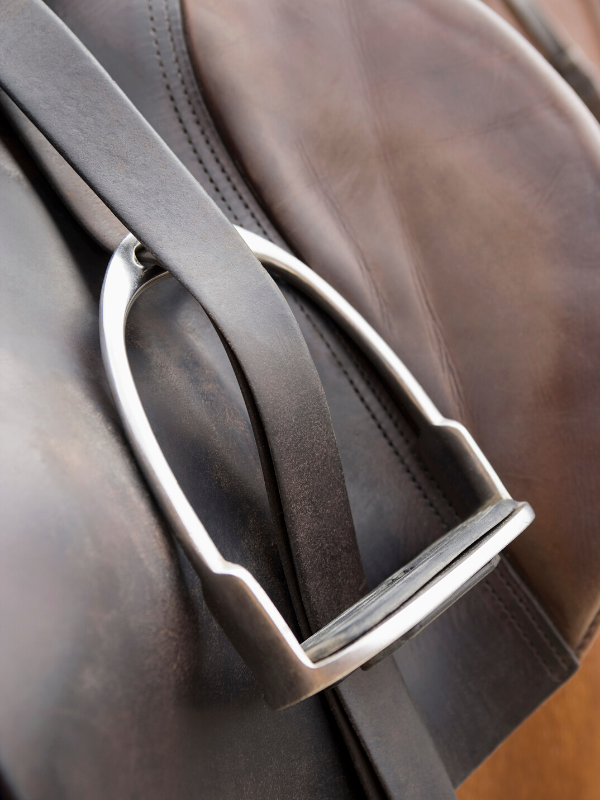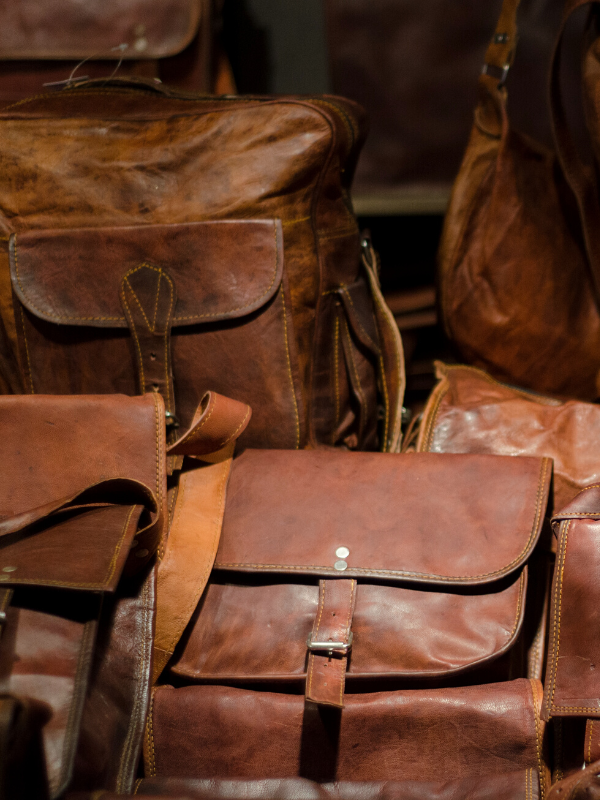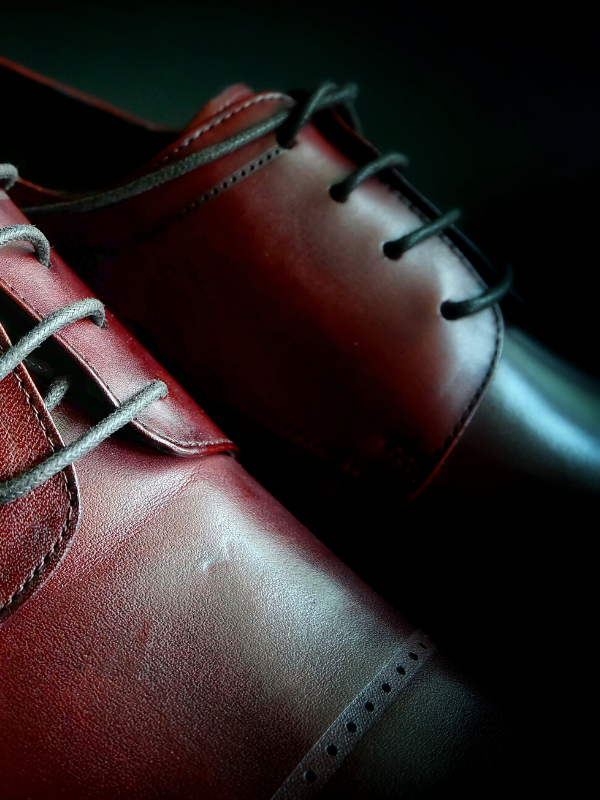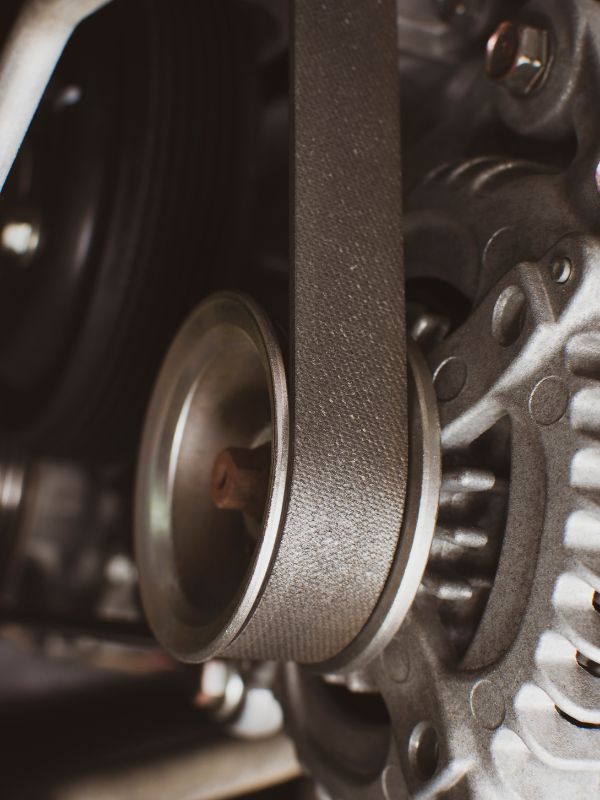Tannery
in Aveyron
since 1880
Tanning is a technique that goes back to prehistory.
But what exactly does it involve ?
Tanning :
a 50.000 year-old artisan process
To do this, at Tannerie Arnal we follow 6 essential steps :
- sorting of skins
- cleaning
- tanning
- crusting
- finishing
- storage
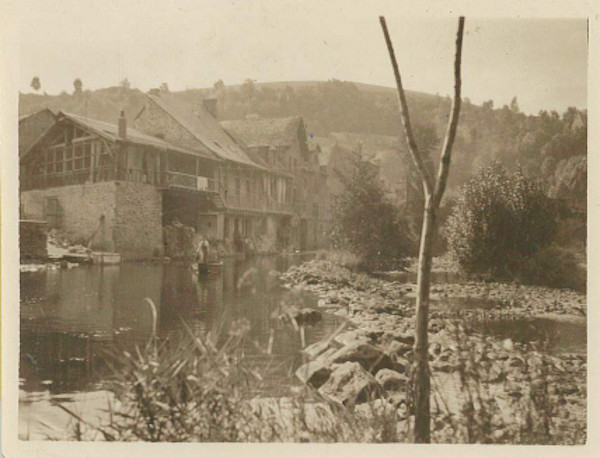
Today, as in the past, tanning consists of recycling skins from meat consumption into a sustainable and eternal product : leather.
Our profession as a tanner is one of the oldest in our civilization since the first traces of leather work date back to Neanderthal man, about 50,000 years ago. The methods have changed, but today, as in the past, tanning is an artisan process that consists of recycling the skins resulting from the consumption of meat into leather.
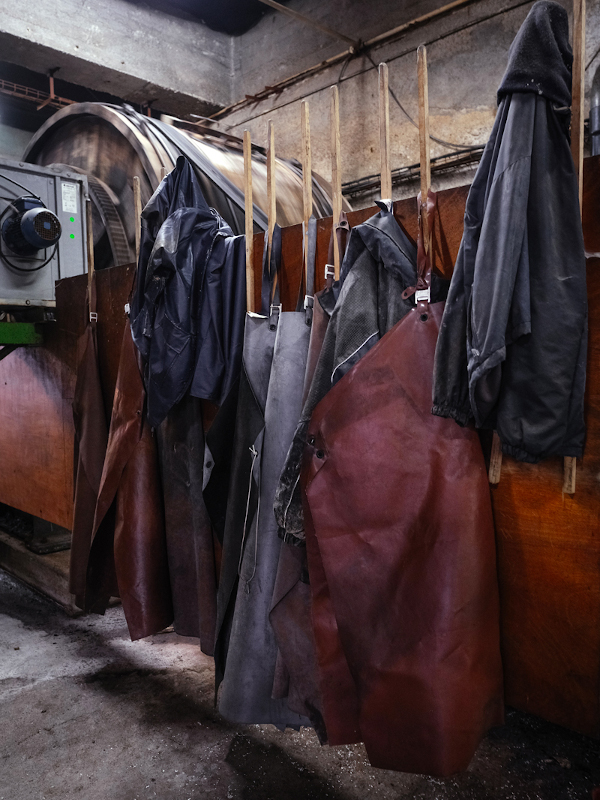
1. Sorting of raw skins
The first criterion to consider is the quality of the skin. Not all skins are of the same quality and a well-treated animal throughout its life will give a much better quality leather.
In addition, to obtain homogeneous tanning on all skins worked at the same time, it is essential to tan similar skins in terms of weight and physical characteristics.
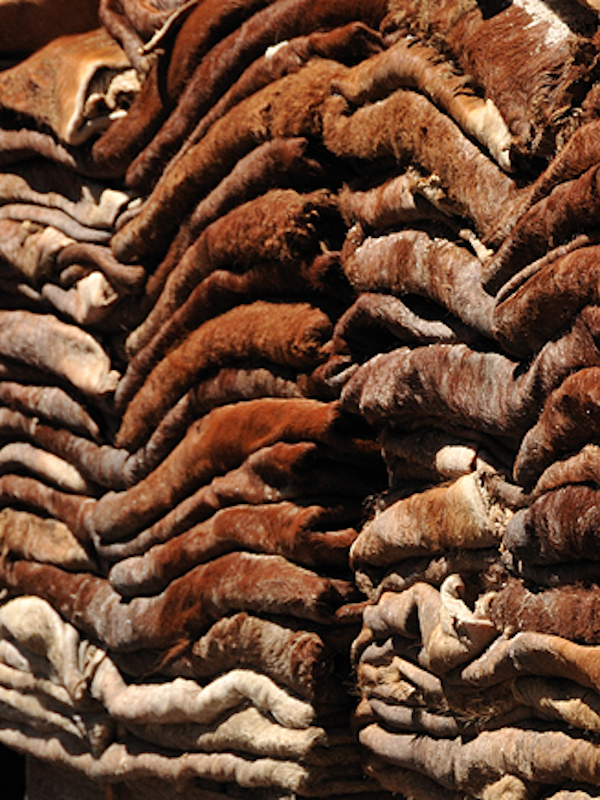

2. Cleaning
Cleaning is the first operation carried out on “fresh” skins leaving the slaughterhouse. It consists of a series of operations, each of which is important in order to clean raw skins and prepare them for the next step: tanning.
Indeed, in order for tanning products to penetrate skins to make them rot-proof and transform them into leather, it is necessary to remove all superfluous elements from raw skins.
2.1 Salting
To conserve the slaughterhouse’s skins until they are tanned and avoid the natural degradation process, the skins are kept in salt. It is therefore essential to rehydrate them and remove this salt using several successive washes carried out in a fulling drum with antiseptic agents to avoid putrefaction of the skin. This can take 24-48 hours for the oiliest skin.
2.2 Hair removal and peeling
This step involves using a chemical process to remove the hair from the skin. First, hair removal allows, by means of quenching in an alkaline bath, to relax the elastic fibres of the skins to detach the hairs and dissolve the keratin from the remaining ones. In a second phase, peeling slightly degrades the fibres to make the skin more receptive to tanning agents. This step takes about 24 hours.
2.3 Scarfing
Once the preservative salt has been removed and raw skin has been rehydrated, all remaining flesh and fat should be removed from the skin. This step can be used to clean both the grain and flesh sides. This mechanical process is carried out using a scarfing machine, the cylinder of which scrapes the back of the skin.
2.4 Splitting
Splitting removes excess subcutaneous tissue and adjusts skin thickness. It is during this operation that the two surfaces of the leather appear: the grain (the top of the skin) and the crust (the bottom of the skin). This mechanical operation is performed with a splitting saw whose blade splits the skins into their correct thickness.
3. Tanning
Tanning is the essential operation that will transform the skin into leather. Tanning can be performed using different methods: mineral tanning (with metal salts), vegetable tanning, synthetic tanning (with polymers), etc.
It is at this stage that the skin becomes rot-proof, resistant and transformed into leather.
This is carried out in drums, and the skins are mixed with tannins that can be of different origins :
- chromium salts, iron salts, zirconium salts: this is referred to as chromium tanning or mineral tanning
- or products of plant origin (bark, wood, leaves, roots): this is referred to as vegetable tanning.
- It is also possible to perform mixed tanning.
3.1 Deliming
This chemical operation is performed in tanning drums with ammonium salts. It makes it possible to remove products combined with collagen from the skin, in order to allow the next step. A final rinse will remove the formed soluble salts. This step takes about 6 hours.
3.2 Pickling
The purpose of this chemical process is to acidify the skins at a given pH to prepare them for tanning or to preserve them. This acidification is carried out during tanning with sulphuric and formic acid.
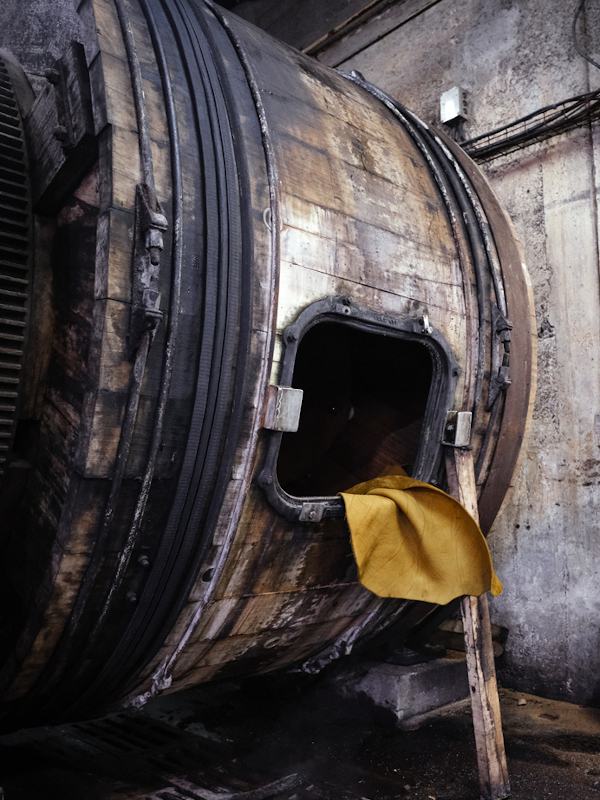
3.3 Tanning
This chemical operation is the final step in turning skins into leather. Carried out in tanning drums, dehydration of the putrescible skin followed by absorption of tanning agents will make the latter rot-proof and resistant.
At Tannerie Arnal we use different tannins :
-
- plants consisting of concentrated powders from mimosa, chestnut, quebracho, etc.
- chrome : chrome salts III
This process takes about 24 hours using chromium and about 48 hours using vegetable matter.
The drums, thanks to their slow and regular rotation movement, allow the tannins to be mixed regularly and to impregnate the skins homogeneously.
After several hours spent in the drums, the skins are placed on stands to drain and dry, then placed on felt mats for centrifugation, the final stage of drying.
At that time, the leathers are then at the “wet blue” stage for chrome-tanned leathers and “wet white” for vegetable-tanned leathers. Still wet, the leathers will be preserved for several days in a dedicated room with controlled humidity, to ensure a perfect impregnation of tanning agents.
It is also during this step before dyeing and finishing, called “crusting”, that the first differences in the leather will appear: flexibility, rigidity, resistance, impermeability, etc.
The skins are then classified by choice according to the level of quality.
4. Crusting
This operation adjusts the suppleness of each skin in order to obtain a homogeneous batch at the end of tanning. The professional expertise of the crusting operator is essential since their know-how determines the final quality of the leather. At Tannerie Arnal, crusting takes place in two main stages : wet crusting followed by dry crusting.
4.1 Wet crusting
It is wet crusting operations, i.e. prior to drying, that gives skins part of their specific characteristics (wrinkled texture, vein, thickness, stiffness and suppleness, colour, etc.).
- Centrifugation (mechanical process): The skins are pressed between two cylinders, which removes part of the water content from them in order to allow subsequent operations.
- Wet sorting: the skins are sorted after tanning in order to classify them by choice depending on the physical defects they present, and possibly thickness.
- Wet splitting and/or flattening (mechanical process): the leather is split and/or flattened in order to adjust and harmonise the thickness of the leather.
- Dyeing (chemical process):
Neutralisation: the leathers are neutralised in dye drums, in order to remove any acidity from them, and to facilitate the penetration of chemical products in the following stages.
Retanning: a possible vegetable or chrome retanning may take place, to adjust the physical characteristics of the leather.
Dyeing: this operation will make it possible to add colour to the leather by using dyes.
Oiling: this step will lubricate the fibres of the skins, to provide suppleness to the leather and its grain (= upper part).
- Wringing (mechanical process): once dyed, the leathers are again wrung and dried. The calibration of the dryer will define the firmness of the leather: its suppleness (its flexibility). The leather is dried after dyeing, to reduce the water content, but also to mechanically work the leather.
- Hot air oiling (chemical + mechanical process): this step is only performed for certain items. A pass-through with a blast of hot air enables a large quantity of insoluble fats (oils, paraffin, vaseline, etc.) to be incorporated into the skins. This will give the skins a certain degree of flexibility. Then a mechanical action called airing follows, to remove excess oils and work the leathers.
- Total drying (mechanical process): total drying of the skins can be carried out using two different methods:
Dry oven: the skins are suspended from bars then heating and mechanical ventilation will induce a hot air flow which will dry the leathers in +/-15h.
Frame oven: the leathers are hung on a frame then stretched, and dried due to the induction of a hot air flow. This process limits the give (= elasticity) of the leathers.
4.2 Dry crusting
After the drying stage, the leather passes into the dry zone, and will continue to be worked on but this time without water. This is called dry crusting. These operations will make it possible to give the leather more of their specific characteristics (flexibility, thickness, appearance, etc.).
- Softening (mechanical process): as the leather coming out of the drier is stiff, it can be worked using a softening machine that softens the leather by hitting it evenly. This will also open the grain for a better finish.
- Dry drumming (mechanical process): dry drumming is another method used to soften the leather after drying. This process will also make it possible to remove dust from the leather, and make the natural grain swell (= relief of the skin).
- Dry splitting and or/flattening (mechanical process): just as for wet splitting and flattening, this operation adjusts and standardises the thickness of the leather.
- Sanding (mechanical process): some items require sanding of the flesh (= the back of the leather) or the grain (= the outside of the leather) in order to give a particular touch or to prepare the leather for finishing.
The leather will then be framed in order to be stretched and thus become easier to handle before finishing with sampling to remove the last marks left by the previous framing.
The leather is not finished yet: it is in the “rough dyed ” stage.
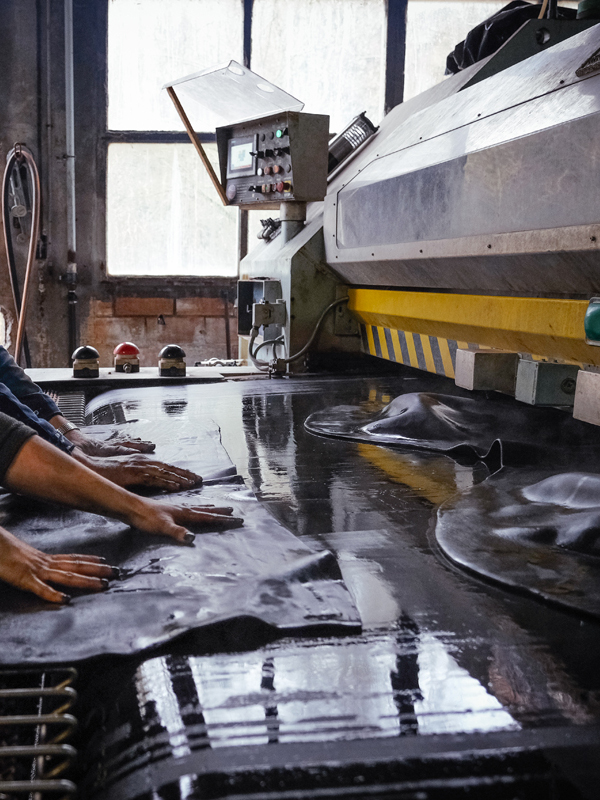

5. Finishing
Finishing is an important operation but not all leather produced will necessarily pass through this stage. The operations described below give leather its final distinctive characteristics.
Several processes are used depending on the intended use but also according to the desired final visual and aesthetic effect: application of nourishing agents and mechanical actions.
5.1 Pigmentation
The leathers are laid flat on a conveyor, which will move them into a spraying booth. This places a finish on the surface of the leather, which will then pass through a dry tunnel, where a flow of hot air is induced. Spraying is carried out in two stages. The application of a base layer for which pigments, dyes, casein, and water are used to pigment the leather. Then the application of a fix comprising resins, cross-linking agents and matting agents in aqueous solution in order to fix the bottom layer.
5.2 The cylinder machine
A film will be placed on the surface of the leathers using an ink cylinder. The products used here are oils, glues (paper, wood), pigments, casein, etc.
5.3 The press
The press, by its mechanical action, will bring to the leathers a particular relief, which can be modified by a plate change on the machine. By heating the latter, this can also stabilise the fix that was previously applied when passing through the spraying booth, and adjust the shine of the leather.
6. Storage
Finally, the last step in the leather process is storage. It is here that the final choice of leather will be determined, as well as the calculation of its surface area. It is in part thanks to its characteristics that the price will be set for sale.
It is also here that the leather will be packaged and stored pending shipment to artisans and workshops that mainly manufacture saddlery, leather goods and furniture.
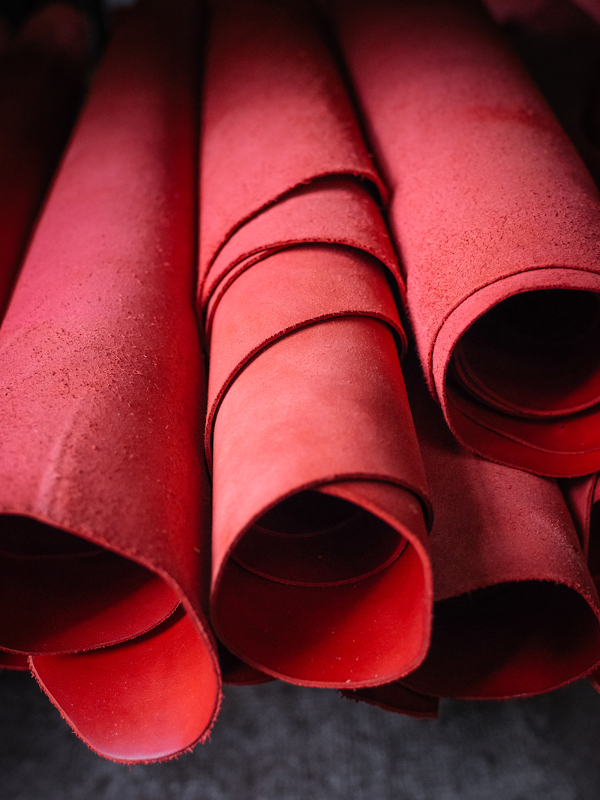
6.1 Sorting of finished leather
When the leather manufacturing process is completed, quality control and sorting are carried out in order to readjust the choices if necessary.
6.2 Measurement
All leather is measured in m² using a measuring machine, which scans the surface of the leather using lasers to determine their exact surface area.
6.3 Packaging and storage
The leather is then packaged on pallets or in bales (wrapped on themselves) and placed in stock in the various storage areas of the workshop.
6.4 Shipping
The leather is shipped to customers via hauliers who collect packages and pallets on a daily basis.
Our leather categories






